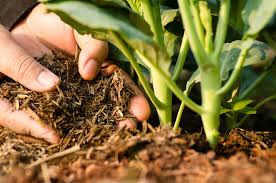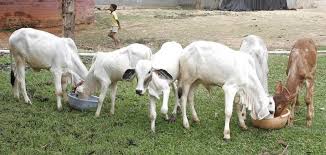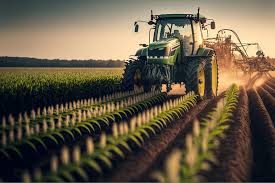Commercial farming is a type of agriculture focused on producing crops and livestock for sale in the market rather than for personal consumption. This approach aims to maximize profits and meet the growing demand for food and agricultural products.
Commercial farming can vary in scale, from small family-owned farms to large corporate operations. It requires careful planning, knowledge of agricultural practices, and an understanding of market trends.
Understanding the Basics of Crop Production
Successful crop production is essential in commercial farming. Here are the fundamental aspects to understand:
1. Soil Preparation: Good crop production starts with healthy soil. Farmers must prepare the soil by tilling, adding organic matter, and ensuring the right pH level.
2. Planting: Planting involves choosing the right time, depth, and spacing for seeds. Correct planting techniques improve seed germination and crop yield.
3. Irrigation: Water is crucial for plant growth. Farmers must implement an irrigation system to provide adequate moisture, especially during dry periods.
4. Fertilization: Nutrients from fertilizers are vital for healthy plant growth. Farmers should test soil nutrient levels and apply the appropriate fertilizers.
5. Pest and Disease Management: Monitoring for pests and diseases is critical. Farmers can use integrated pest management (IPM) techniques to protect their crops while minimizing chemical use.
6. Harvesting: Harvesting at the right time ensures the best quality and yield. Proper techniques should be used to minimize damage during harvesting.
Selecting Suitable Crops for Commercial Farming

Choosing the right crops is crucial for the success of a commercial farm. Here are steps to guide you in selecting suitable crops:
1. Assess Local Climate: Different crops thrive in various climates. Check the average temperature, rainfall, and growing season in your area to determine suitable crops.
2. Analyze Soil Conditions: Conduct a soil test to evaluate nutrient levels, pH, and texture. This information helps you select crops that grow well in your soil type.
3. Research Market Demand: Study local and regional markets to identify crops that are in demand. Choose crops that have good selling potential and profitability.
4. Consider Crop Rotation: Plan for crop rotation to improve soil health and reduce pests. Growing different crops in succession helps maintain soil fertility.
5. Choose High-Value Crops: If resources allow, consider growing high-value crops such as fruits, vegetables, or specialty crops that can yield better profits.
6. Evaluate Your Resources: Consider your available resources, including labor, water supply, and equipment. Choose crops that match your operational capabilities.
Crop Cultivation Techniques
Effective crop cultivation techniques are vital for maximizing yield and ensuring healthy crops. Here are important techniques to follow:
1. Land Preparation: Start by plowing and leveling the land to create a suitable seedbed. This process improves soil structure and prepares it for planting.
2. Planting Methods: Decide between direct seeding and transplanting seedlings. Each method has advantages depending on the crop type and local conditions.
3. Irrigation Systems: Implement an efficient irrigation system, such as drip or sprinkler irrigation, to provide consistent moisture to crops. Regularly check for leaks and blockages.
4. Fertilizer Application: Apply fertilizers based on soil tests. Use organic or synthetic fertilizers according to the specific needs of the crops you are growing.
5. Weeding: Regularly remove weeds to prevent competition for nutrients and water. Hand weeding, hoeing, or using mulches can effectively manage weed growth.
6. Monitoring Growth: Keep track of crop growth and health throughout the growing season. Monitor for signs of nutrient deficiencies, pests, or diseases.
7. Pest Control: Use integrated pest management strategies, including natural predators and organic pesticides, to minimize crop damage.
Read Also: Dragon Fruits: History, Nutrition, Health Benefits and Growing Guide
Managing Soil Health and Fertility

Healthy soil is the foundation of successful crop production. Here are ways to manage soil health and fertility:
1. Regular Soil Testing: Conduct soil tests every few years to monitor nutrient levels, pH, and organic matter content. This data informs your fertilization strategy.
2. Organic Matter Addition: Add compost, manure, or cover crops to improve soil structure and fertility. Organic matter enhances water retention and nutrient availability.
3. Crop Rotation: Rotate crops annually to prevent nutrient depletion and reduce the buildup of pests and diseases. This practice helps maintain soil health.
4. Reduced Tillage: Consider reduced or no-tillage practices to protect soil structure and prevent erosion. Tillage can also disturb beneficial soil organisms.
5. Use of Cover Crops: Plant cover crops during the off-season to prevent soil erosion, suppress weeds, and enhance soil health through nitrogen fixation.
6. Mulching: Apply organic or synthetic mulch around plants to conserve soil moisture, regulate temperature, and reduce weed growth.
Introduction to Livestock Production
Livestock production is an essential component of commercial farming, providing meat, milk, wool, and other products. Understanding the basics of livestock production is crucial for farmers looking to diversify their operations. Here’s what to consider:
1. Choosing the Right Livestock: Select breeds that are well-suited to your climate, land, and market demand. Common livestock includes cattle, pigs, sheep, goats, and poultry.
2. Feeding and Nutrition: Provide balanced diets to livestock. Nutritional needs vary by species, so consult with a veterinarian or livestock nutritionist for proper feeding guidelines.
3. Housing and Shelter: Ensure livestock have appropriate housing to protect them from weather extremes and predators. Proper ventilation and cleanliness are vital for animal health.
4. Health Management: Regular veterinary care, vaccinations, and parasite control are crucial for maintaining healthy livestock. Monitor animals for signs of illness or distress.
5. Breeding Practices: Implement breeding programs to improve livestock genetics and productivity. Consider artificial insemination or natural breeding methods.
6. Waste Management: Manage livestock waste effectively to prevent pollution and promote soil health. Manure can be composted and used as fertilizer.
Choosing the Right Livestock for Your Farm
Selecting the right livestock is crucial for the success of your farming operation. Here are steps to guide you in choosing suitable livestock:
1. Assess Your Resources: Consider the land size, available feed, water supply, and labor. Ensure you can provide adequate care for your livestock.
2. Identify Market Demand: Research local markets to identify which types of livestock are in demand. Look for species that can yield high profits.
3. Evaluate Climate and Environment: Choose livestock breeds that are well-adapted to your local climate. Consider factors like heat tolerance, cold resistance, and disease susceptibility.
4. Consider Your Goals: Determine your farming goals. Are you focused on meat, milk, or wool production? Your objectives will influence your livestock selection.
5. Research Breeds: Look into different breeds and their characteristics. Some breeds may be more productive, disease-resistant, or suited for your farming conditions than others.
Read Also: The Anise Fruits: Economic Importance, Uses, and By-Products
Livestock Care and Management

Effective livestock care and management ensure the health and productivity of your animals. Here’s how to manage livestock effectively:
1. Regular Health Checks: Monitor your livestock daily for signs of illness or distress. Early detection of health issues can prevent larger problems.
2. Proper Feeding: Provide a balanced diet based on the specific needs of each species. Ensure clean, fresh water is always available.
3. Clean Housing: Keep animal housing clean and dry. Regularly remove waste and provide fresh bedding to prevent disease.
4. Vaccination and Health Programs: Implement a vaccination schedule and follow veterinary recommendations for parasite control.
5. Record Keeping: Maintain accurate records of livestock health, breeding, and production. This data can help improve management decisions over time.
Integrating Crop and Livestock Production
Integrating crops and livestock can enhance productivity and sustainability on your farm. Here’s how to effectively combine these practices:
1. Crop Residue Utilization: Use crop residues as feed for livestock. This practice reduces waste and provides a cost-effective feeding source.
2. Nutrient Recycling: Manure from livestock can be used as fertilizer for crops, returning nutrients to the soil and reducing chemical fertilizer use.
3. Diversified Income: Growing crops and raising livestock provides multiple income streams, reducing the risk of relying on a single source of revenue.
4. Improved Soil Health: Livestock grazing can help manage weeds and promote soil health by increasing organic matter through manure.
5. Rotational Grazing: Implement rotational grazing practices to allow pastures to recover and improve forage quality while supporting crop production.
Market Analysis and Selling Strategies
Understanding the market is crucial for the success of your commercial farming operation. Here are steps to analyze the market and develop effective selling strategies:
1. Research Market Trends: Study current trends in agriculture to identify popular crops and livestock products. Stay informed about consumer preferences.
2. Identify Target Markets: Determine who your customers are. Are they local grocery stores, farmers’ markets, or online consumers? Tailor your approach to meet their needs.
3. Develop a Marketing Plan: Create a marketing plan outlining how you will promote and sell your products. Include pricing strategies and advertising methods.
4. Networking: Build relationships with local buyers, distributors, and other farmers. Networking can lead to new selling opportunities.
5. Online Presence: Consider setting up an online presence through social media or a website to reach a broader audience and showcase your products.
Financial Considerations in Commercial Farming
Financial management is critical to the sustainability of your commercial farming operation. Here are essential financial considerations:
1. Budgeting: Create a detailed budget that outlines all expenses and expected income. This document will help you manage finances and plan for future investments.
2. Cost Analysis: Regularly analyze your production costs to identify areas for improvement. Look for ways to reduce expenses without compromising quality.
3. Funding Options: Explore funding options such as loans, grants, or investment opportunities to support your farming operations.
4. Profitability Assessment: Regularly assess the profitability of your crops and livestock. Adjust your strategies based on what is most profitable.
5. Record Keeping: Maintain accurate financial records for income, expenses, and investments. This information is vital for tax purposes and future planning.
Legal and Regulatory Requirements
Navigating legal and regulatory requirements is crucial for compliance and successful farming. Here are key areas to consider:
1. Business Registration: Ensure your farming operation is legally registered and obtain any necessary licenses or permits.
2. Zoning Regulations: Check local zoning laws to ensure your farming activities comply with land-use regulations.
3. Health and Safety Regulations: Follow health and safety regulations for food production and animal welfare. This compliance protects consumers and your business.
4. Environmental Regulations: Be aware of environmental regulations related to waste management, pesticide use, and land conservation.
5. Insurance: Consider obtaining insurance to protect your farm from potential risks, such as natural disasters or liability claims.
Sustainable Practices in Commercial Farming
Sustainable practices are essential for long-term success in commercial farming. Here are strategies to promote sustainability:
1. Crop Diversity: Grow a variety of crops to promote biodiversity and reduce the risk of crop failure.
2. Water Conservation: Implement water-saving practices such as drip irrigation and rainwater harvesting to conserve this vital resource.
3. Soil Conservation: Use cover crops and no-till farming techniques to protect soil health and prevent erosion.
4. Integrated Pest Management: Employ IPM strategies to minimize chemical pesticide use while effectively managing pests.
5. Community Engagement: Engage with local communities and promote sustainable practices through education and collaboration.
Commercial farming offers a viable pathway for meeting global food demands while providing opportunities for profitability and sustainability.
By understanding crop and livestock production, effective management practices, market strategies, and sustainable approaches, farmers can create a successful commercial farming operation. Through careful planning and continuous learning, you can build a thriving farm that contributes positively to the agricultural landscape.
Do you have any questions, suggestions, or contributions? If so, please feel free to use the comment box below to share your thoughts. We also encourage you to kindly share this information with others who might benefit from it. Since we can’t reach everyone at once, we truly appreciate your help in spreading the word. Thank you so much for your support and for sharing!
Read Also: Chicken Brooder House – Complete Chicks Brooding Care Guide






